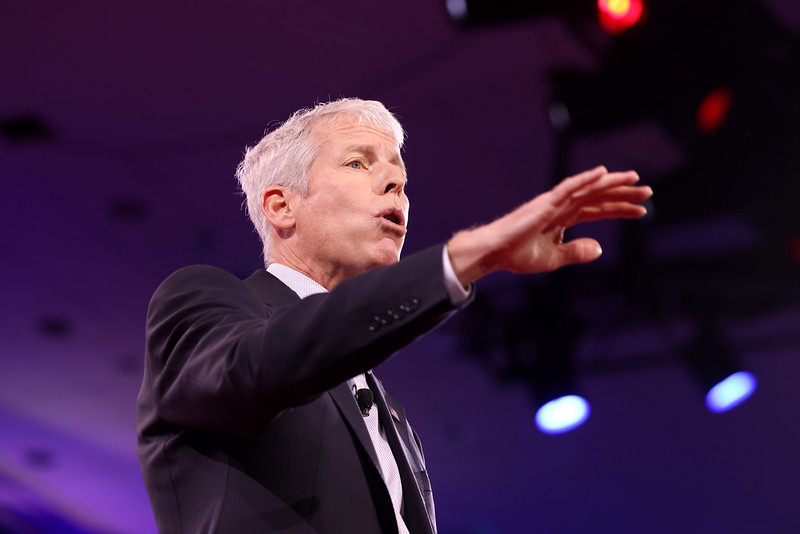King Coal and industry multinational Peabody Energy (BTU) have taken a beating in the markets lately, and it has some executives in the dirty energy industry freaking out.
On September 19, Dow Jones removed Peabody Energy from its S&P 500 index, considered a list of the premier U.S. stocks for investors. The St. Louis Post-Dispatch cited the downward trajectory of the company’s market capitalization as the rationale behind the ouster of Peabody from the S&P 500 index. Peabody will now join the JV leagues in the S&P MidCap 400.
Peabody’s downfall symbolizes ongoing market trends within the coal industry overall.
“The total market value of publicly traded U.S. coal companies has rebounded slightly in recent months, but remains nearly 63% lower than a total of the same companies at a near-term coal market peak in April 2011,” explained SNL Energy in April.
“A perfect storm of factors, including new federal regulations impacting coal-burning power plants, cheap competing fuels, railroad service issues and weak global markets has kept pressure on a number of coal operators since the industry’s 2011 near-term peak.”
A new study published this week by the Carbon Tracker Initiative — best known for its work accounting for a “carbon budget” and unburnable carbon — raises further questions about the future of coal’s global market hegemony. It’s another blow to the coal industry as the United Nations convenes this week’s Climate Summit in New York City to discuss climate disruption, in no small part driven by antiquated coal-fired power plants.
Carbon Tracker: Global Coal Demand Diminishes
Carbon Tracker’s report, ”Carbon Supply Cost Curves: Evaluating Financial Risk to Coal Capital Expenditures,” concludes that “the tide is turning against the thermal coal industry [and] high cost new mines don’t make sense for investors.”
A key reason why laying down capital investments in coal mining and the industry at-large is out of vogue is the situation in China.
As the Climate Desk recently pointed out, China is undergoing its own hydraulic fracturing (“fracking”) boom rife with its own problems (climate change included), also mentioned in a recent Rolling Stone article on China’s energy transition.
As China shifts to shale gas production and feeding its electricity grid with methane, Chinese coal demand is expected to reach peak levels in 2016, according to Carbon Tracker.
“China’s coal demand could surprise people by peaking in 2016 and then decline gradually thereafter, driven by efficiency measures, increased renewables, hydro, gas and nuclear and tougher policies to cut air pollution,” explains a press release introducing the report. “Coal producers around the world are relying on a flawed assumption of insatiable coal demand in China. The business model for coal looks on shaky ground without that demand.”
The same story goes for the United States, where the power grid has rapidly shifted from coal to gas supplies. Just a couple weeks before the S&P downgraded Peabody, it encouraged investors to bet big on fracking.
S&P recommended doing so because President Barack Obama’s carbon rule regulates coal-fired power plants, but not gas plants, meaning the entire oil and gas industry stands to gain — including midstream pipelines — just as coal stands to lose.
“By now, pipeline companies have come to accept that abundant U.S. natural gas supply is here to stay. In response, they have undertaken various capital projects to improve their competitive position and adapt to changing natural gas flows,” wrote S&P.
“We expect the Clean Power Plan to provide additional incentives to pursue pipeline expansions given the longer-term expectations for growing natural gas consumption. While many pipeline companies are still addressing the implications of shale gas on their operations, we believe the Clean Power Plan translates to broadly positive implications companies in the sector.”
Peabody Disagrees, Murray Freaks Out
Peabody Energy disagrees with these assessments and says China is not yet a lost cause for coal boosters.
“Based on current information, Peabody expects China’s recent policy to have no negative impact on the company’s coal export volumes,” the company explained in a September 18 press release.
“Also, the most restrictive aspects appear to apply to a limited number of coal users that lack emissions controls…Peabody applauds China’s continuing actions to address emissions by greatly increasing demand for coal within power plants with control technologies, while reducing coal for use in direct applications that are emissions intensive.”
Though Peabody remains confident, at least one major coal company has not shown such resolve.
“We have the absolute destruction of the American coal industry. If you think it’s coming back, you don’t understand the business,” Murray Energy CEO Bob Murray remarked to hundreds of coal industry executives at the Platts 37th Coal Marketing Days. “Or you’re smoking dope.”
Murray further claimed that publicly traded companies like Peabody are being dishonest with their investors for public relations purposes about the future of coal.
“You got to be the low-cost producer every day, in every region. Everything else is public relations garbage by public companies that are worried about stock prices,” Murray said.
With China set to ban imports of coal containing high levels of ash and sulphur beginning in 2015, and seemingly keen to pursue a cleaner energy future, perhaps Murray — despite his climate change denial — has a point.
Image credit: Future and past sign by Gunnar Pippel via Shutterstock.
Subscribe to our newsletter
Stay up to date with DeSmog news and alerts






